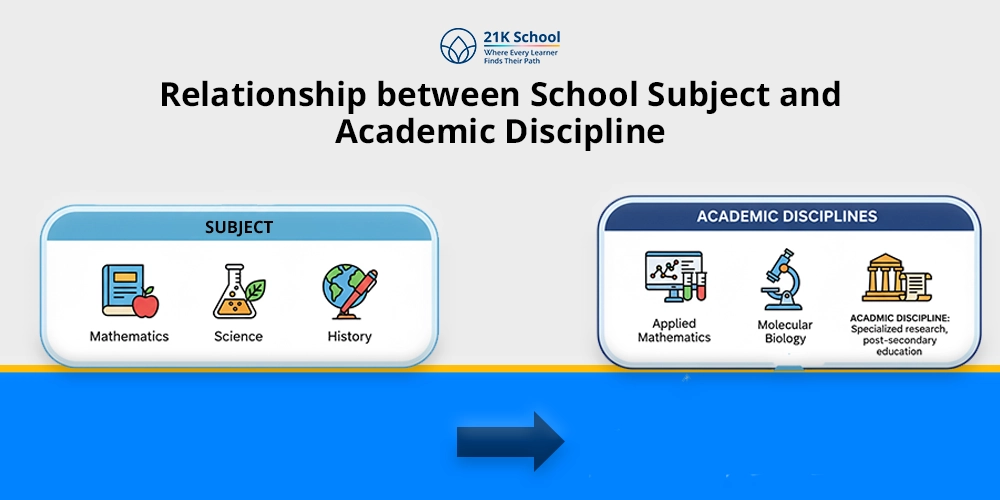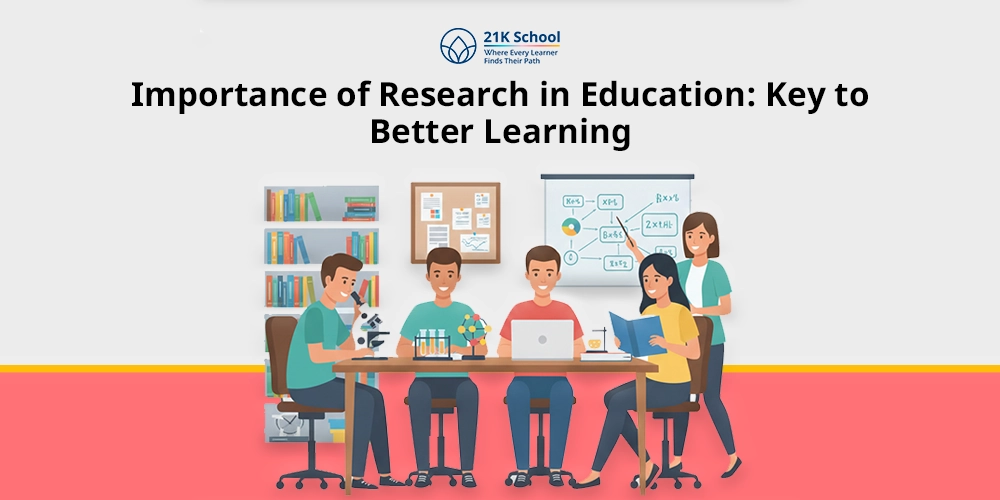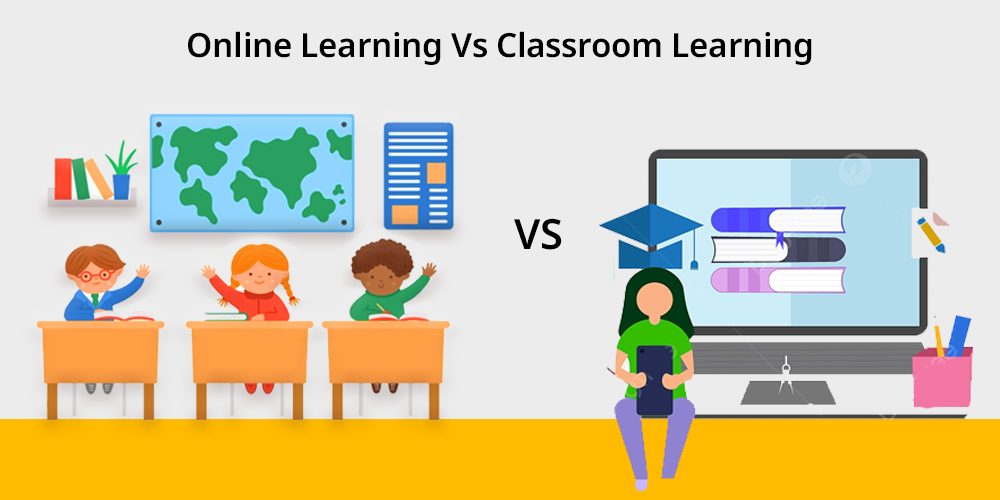
With the expansion of technology and internet access, online learning has emerged as the new way of learning.
Both online and classroom learning serve a purpose, and both have their benefits.
This leaves many parents with the question: Which method of learning is better for my child?
Contents
What is Online Learning?
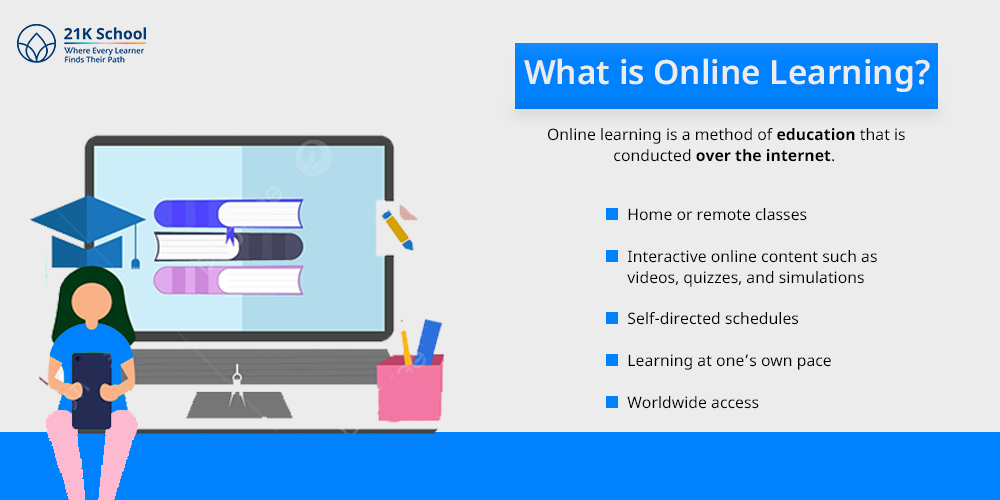
Online learning is a method of education that is conducted over the internet.
Students participate in virtual classes using Zoom, Google Meet, or specialised learning websites. Such classes may be real-time (live) or pre-recorded, providing the benefit of learning at any time and from anywhere.
In an online environment, students communicate with instructors and peers via video calls, message boards, emails, and online assignments.
The major characteristics of online learning are:
- Home or remote classes
- Interactive online content such as videos, quizzes, and simulations
- Self-directed schedules
- Learning at one’s own pace
- Worldwide access
Online learning is particularly useful for students who travel a lot, reside in rural areas, or have a more individualised approach to learning.
What is Classroom Learning?

Classroom learning is conventional face-to-face education in which instructors and learners assemble in a physical setting like a school. The classes are taught directly, usually in groups, and adopt a predetermined daily routine.
This approach has dominated learning for centuries and is famous for encouraging direct contact, planned routines, and practical activities that bring active learning.
The essential characteristics of classroom learning are:
- Physical attendance in a school building
- Face-to-face instruction and peer engagement
- Group work and class discussions
- Timed lessons and set routines
For some students, classroom learning enhances discipline, social development, and a feeling of community.
Online Learning vs Classroom Learning: Key Differences
| Aspect | Online Learning | Classroom Learning |
| Learning Environment | Home or remote setting | School campus with a structured environment |
| Flexibility | High flexibility, self-paced | Fixed schedule and routine |
| Student-Teacher Interaction | Virtual via digital platforms | Face-to-face communication |
| Accessibility | Available from anywhere | Limited to physical location |
| Pace of Learning | Personalised pace | Uniform pace for all students |
| Technology Use | A core part of learning | Varies, sometimes limited |
| Engagement | Interactive content depends on self-motivation | Group activities and classroom interaction |
| Social Development | Limited, needs structured events | Natural peer bonding and social learning |
| Cost | More affordable, fewer overheads | Higher costs, including travel and facilities |
| Learning Resources | Extensive digital content | Textbooks and printed materials |
| Parental Involvement | High, especially for younger learners | Moderate, led mostly by teachers |
| Assessment | Continuous, project-based | Exam-centric, periodic |
Now let’s delve into detail about how classroom learning and online learning differ in terms of various facets of education:
1. Learning Environment
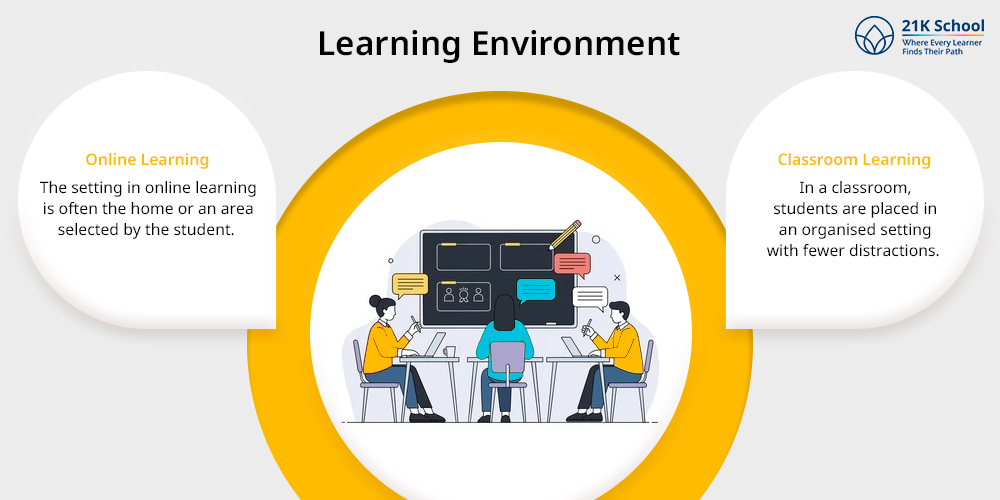
The setting in online learning is often the home or an area selected by the student. This can lower stress levels, avoid travel time, and provide a child with the opportunity to study in a positive learning environment.
In a classroom, students are placed in an organised setting with fewer distractions. Schools have laboratories, libraries, sports facilities, and defined learning areas that contribute to overall child development.
2. Flexibility and Scheduling
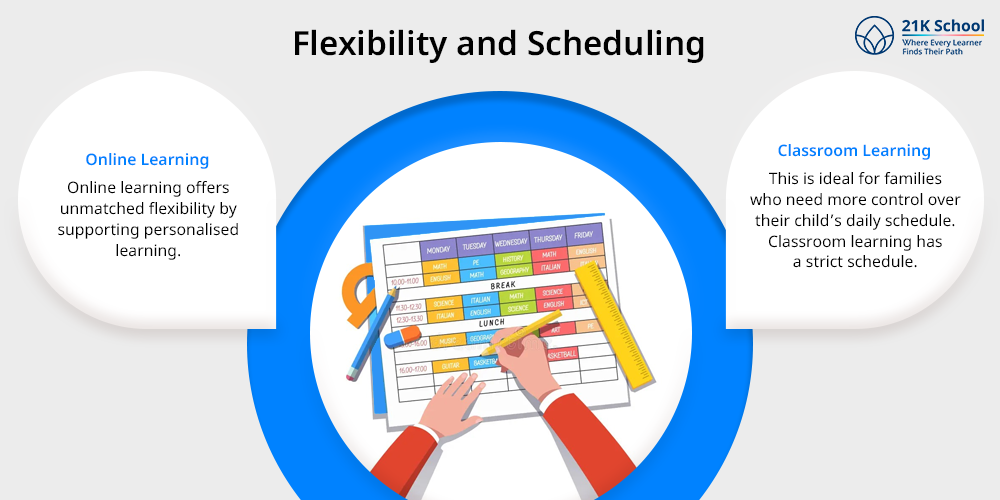
Online learning offers unmatched flexibility by supporting personalised learning.
Students can learn at their own pace, choose when to watch recorded lessons, and schedule their studies around personal activities or family needs.
This is ideal for families who need more control over their child’s daily schedule. Classroom learning has a strict schedule.
The learners have to be present at specific times for classes, which can instil routine and time management, but might not be desirable for all, particularly for those who participate in extracurricular activities or have special health requirements.
3. Student-Teacher Interaction
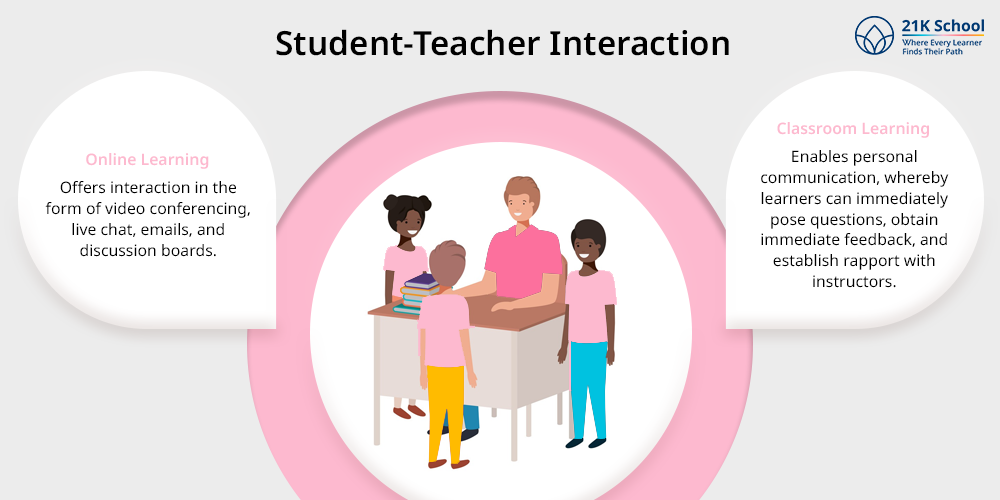
Classroom learning enables personal communication, whereby learners can immediately pose questions, obtain immediate feedback, and establish rapport with instructors.
Online learning offers interaction in the form of video conferencing, live chat, emails, and discussion boards.
Though absent of physical presence, contemporary platforms guarantee that students do not miss out on personal attention, particularly in the small virtual classrooms.
4. Accessibility and Reach
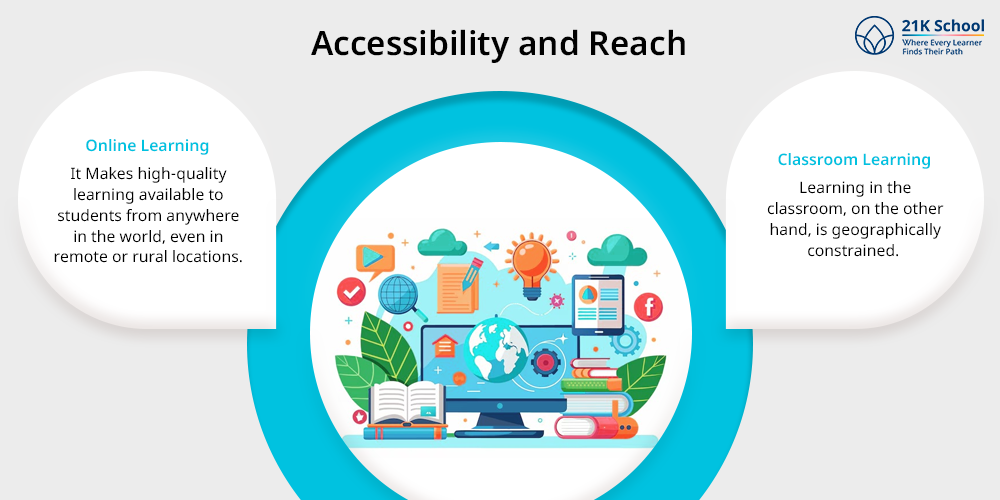
Online learning makes high-quality learning available to students from anywhere in the world, even in remote or rural locations. Online learning is also helpful for students with special needs.
Learning in the classroom, on the other hand, is geographically constrained. Parents have to select a school close by or be ready to travel long distances. Well-performing schools might be scarce in some areas.
5. Learning Pace
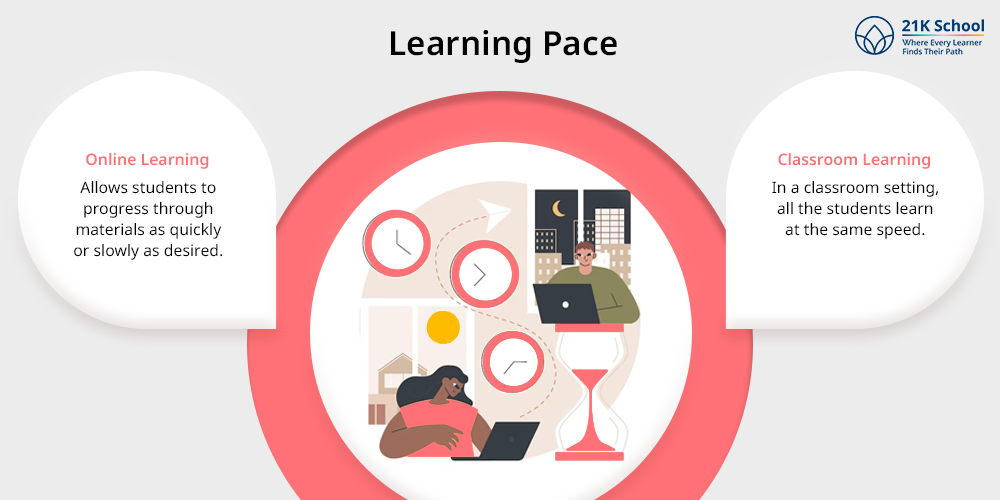
Online learning allows students to progress through materials as quickly or slowly as desired.
This is especially helpful for accelerated learners or for those who require additional time to grasp an area of study.
In a classroom setting, all the students learn at the same speed. Although this keeps everyone consistent, it can cause learning gaps as it might not be appropriate for students who need more tailored learning.
6. Application of Technology
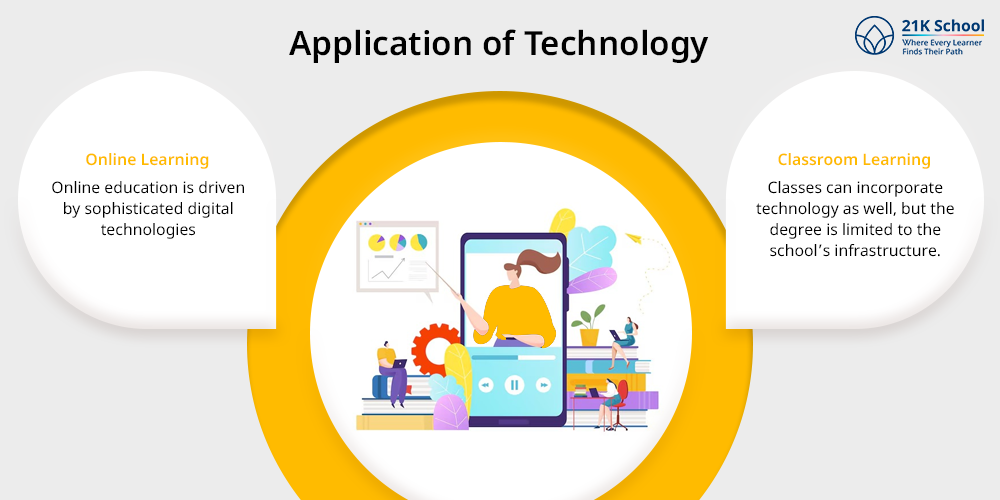
Online education is driven by sophisticated digital technologies like learning management systems, gamified quizzing, interactive videos, and progress tracking.
These technologies engage the learner and make learning trackable.
Classes can incorporate technology as well, but the degree is limited to the school’s infrastructure. While some schools implement smart classrooms, such as smartboards and tablets, the majority still depend on conventional chalk-and-talk teaching.
7. Classroom Engagement
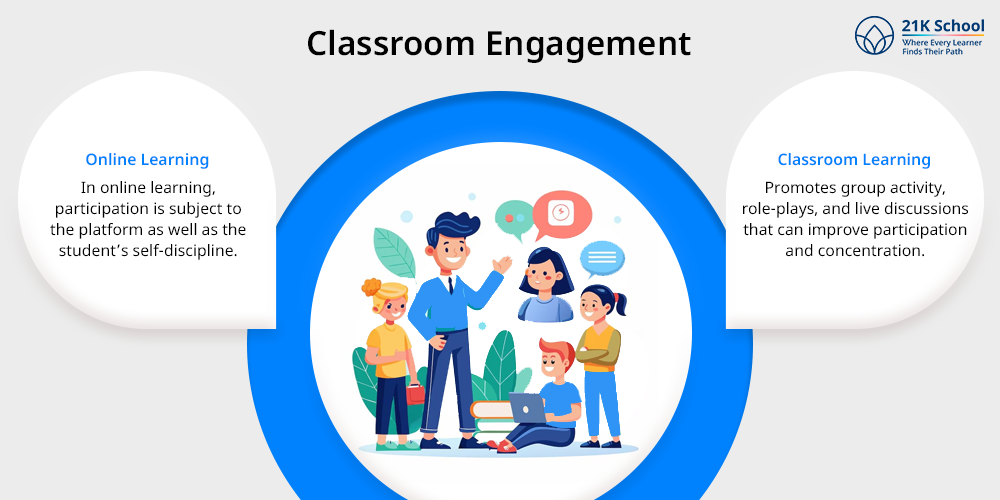
Classroom learning promotes group activity, role-plays, and live discussions that can improve participation and concentration.
In online learning, participation is subject to the platform as well as the student’s self-discipline. Yet, with interactive lessons and project-based learning, online learning platforms can ensure student engagement.
8. Social Development

Classroom learning provides more chances for socialisation. Students interact with classmates every day, participate in group work, and form friendships that facilitate emotional and social development.
In online learning, opportunities for socialisation are reduced unless the school arranges virtual clubs, activities, and gatherings. Parents would have to fill this gap with sports, hobby clubs, or playdates at the local level.
9. Cost and Affordability
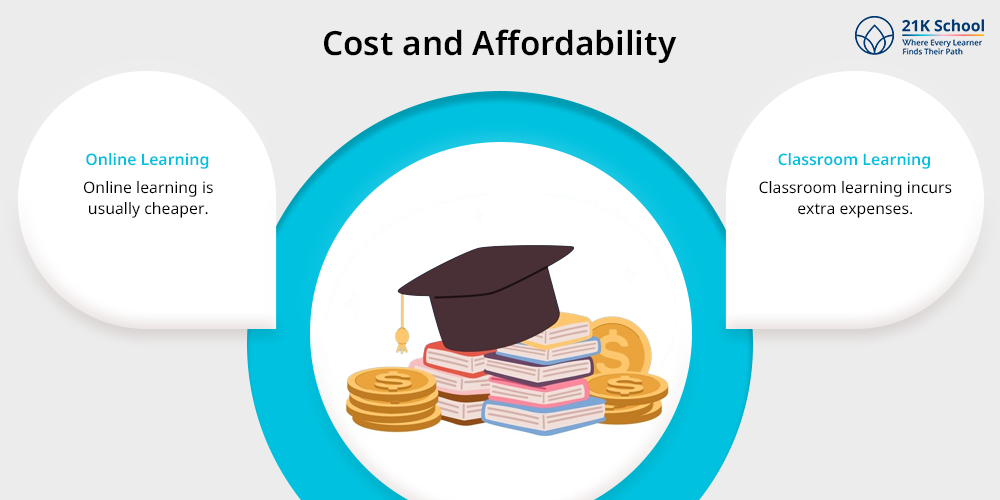
Online learning is usually cheaper. It saves expenses such as transport, uniforms, school meals, and maintenance of buildings. Furthermore, families also save money and time on daily trips.
Learn how online learning can reduce the cost of education.
Classroom learning incurs extra expenses, such as infrastructure, transport, and other general school expenditure, which over time can prove costly.
10. Learning Resources
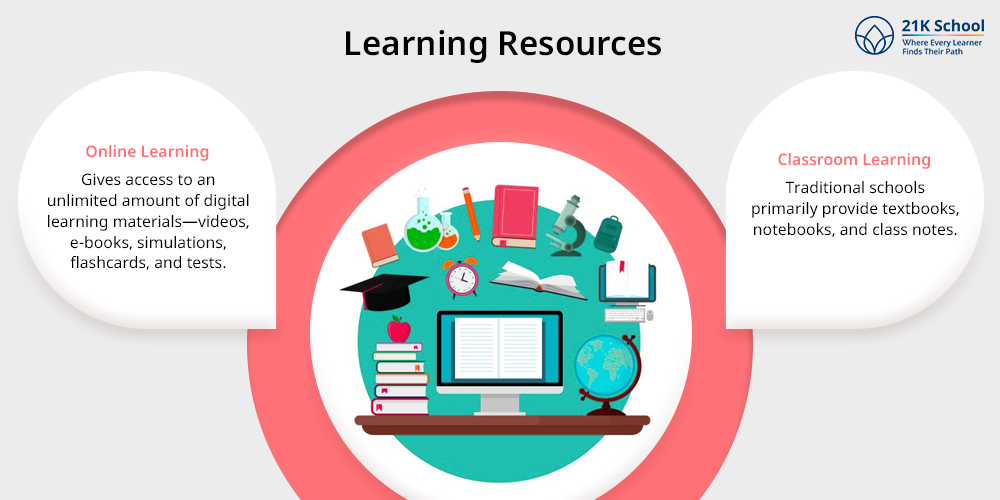
Online learning gives access to an unlimited amount of digital learning materials—videos, e-books, simulations, flashcards, and tests. These can be accessed whenever for clearer comprehension.
Traditional schools primarily provide textbooks, notebooks, and class notes. Although beneficial, they could be less diverse and flexible than digital resources.
11. Parental Involvement
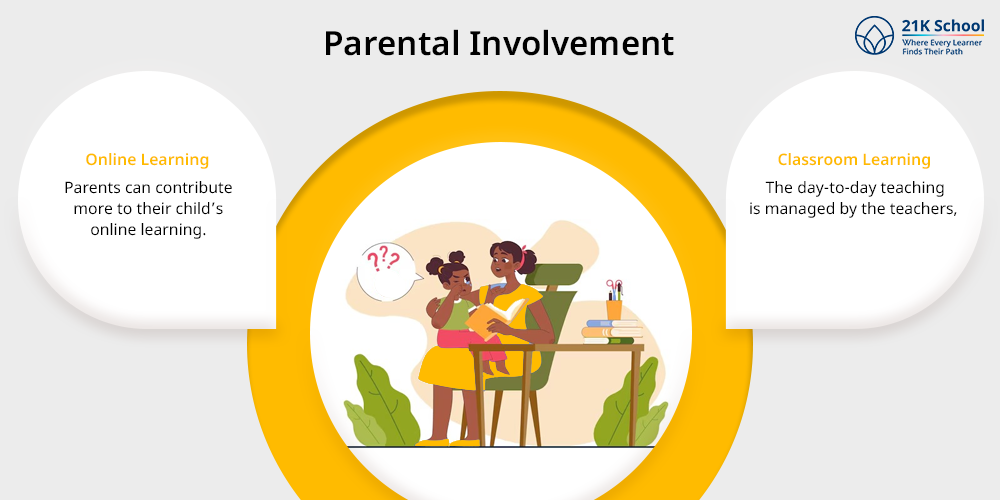
In classroom learning, the day-to-day teaching is managed by the teachers, and the parents’ role is largely restricted to supporting homework and parent-teacher conferences.
Parents can contribute more to their child’s online learning. They might need to assist their children, keep them on schedule, and interact with teachers more frequently. They can even give important insights about their child’s progress.
12. Methods of Assessment
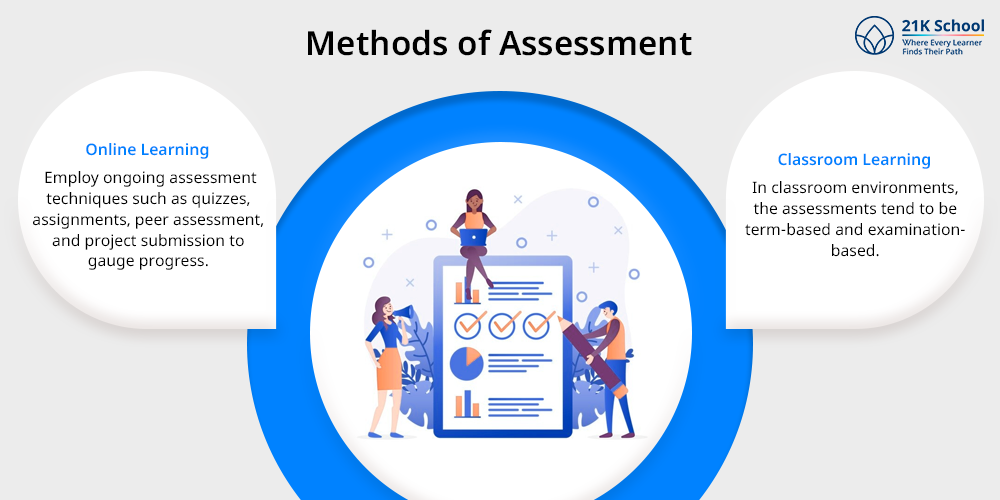
Online schools employ ongoing assessment techniques such as quizzes, assignments, peer assessment, and project submission to gauge progress.
In classroom environments, the assessments tend to be term-based and examination-based, which might not always represent steady effort and learning for the entire term.
How to Select the Right Mode of Learning for Your Child?
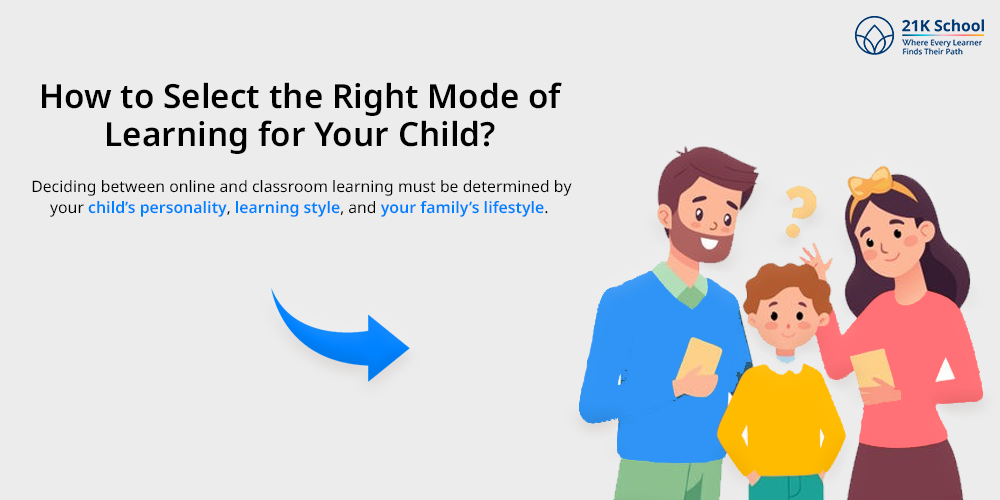
Every child has a different learning method. Deciding between online and classroom learning must be determined by your child’s personality, learning style, and your family’s lifestyle. Consider the following questions:
Is your child self-disciplined and adept at using technology?
Do you require flexibility because of travel or health needs?
Is your child most productive in group settings or as an independent learner?
Can you assist with support for home learning?
If your child prefers to work alone and requires flexibility, online learning can be a strong option. Alternatively, if they require organisation and interpersonal interaction, classroom education could provide the stability they require.
Conclusion
Both classroom and online learning both have meaningful experiences to offer. One is not necessarily preferred over the other. It depends on what is best for your child.
Online learning offers more flexibility, convenience, and tools of today, whereas classroom learning provides socialisation, routine and structure.
As education continues to change, many parents are even choosing blended learning models to take the positives from both forms.
Whatever option you choose, ensure it supports your child’s growth, development, well-being, and sense of wonder.

